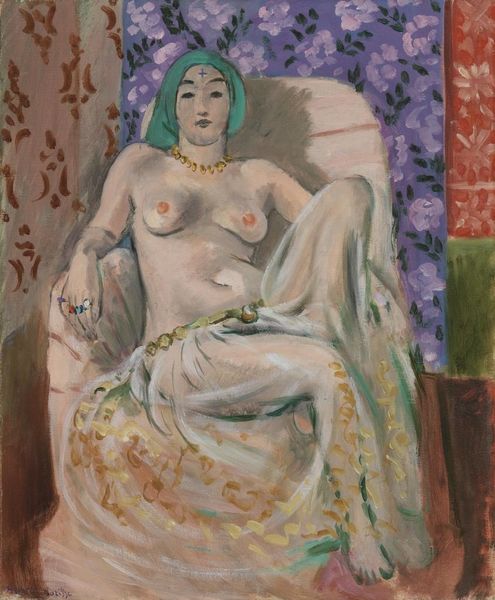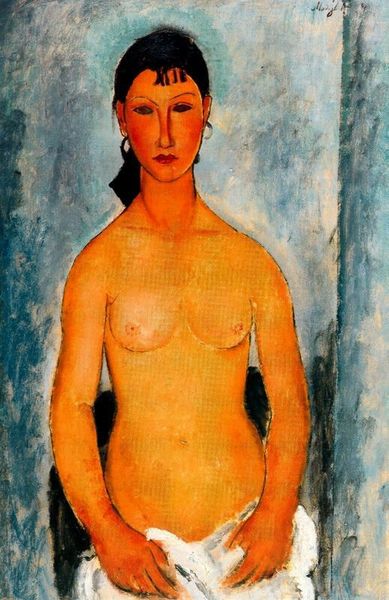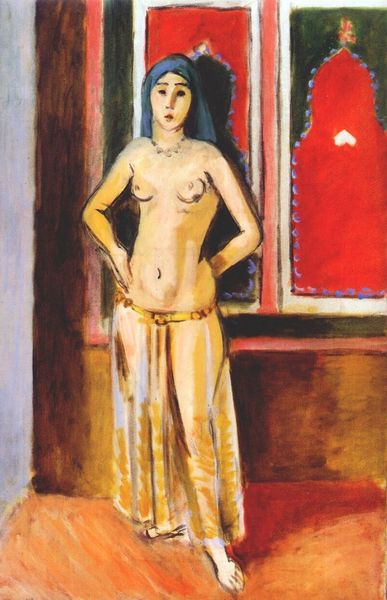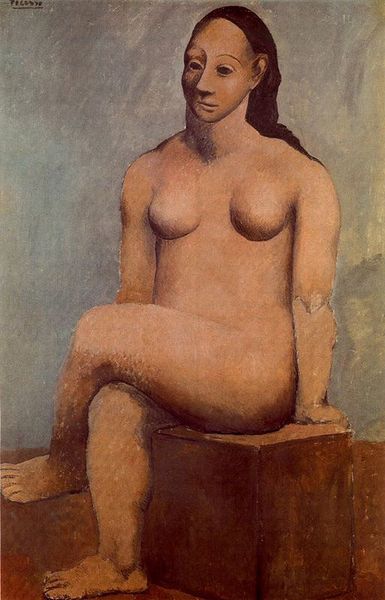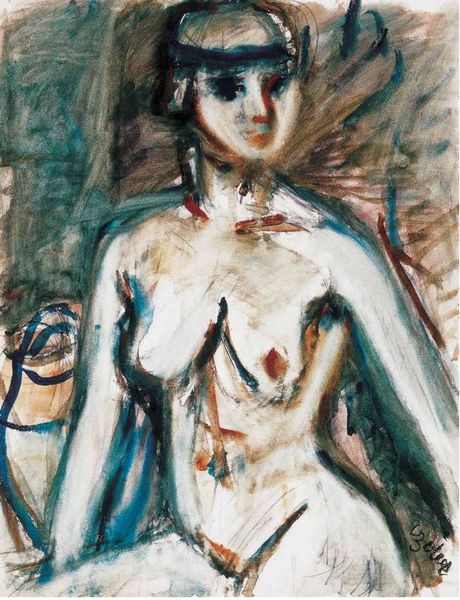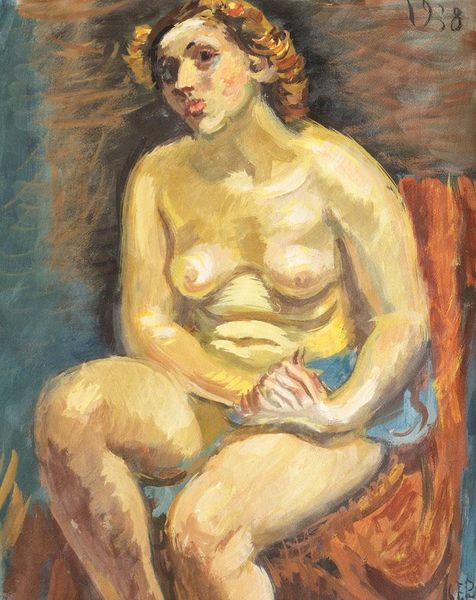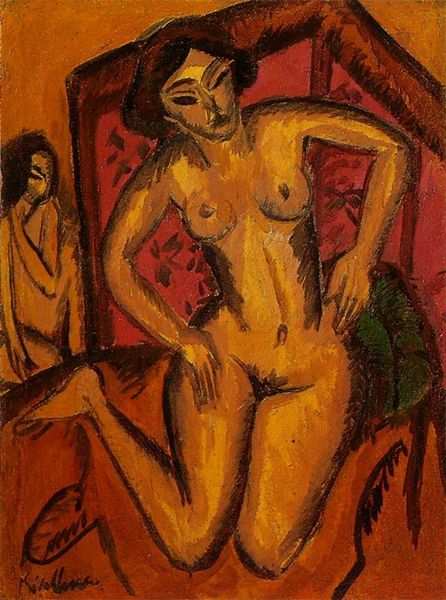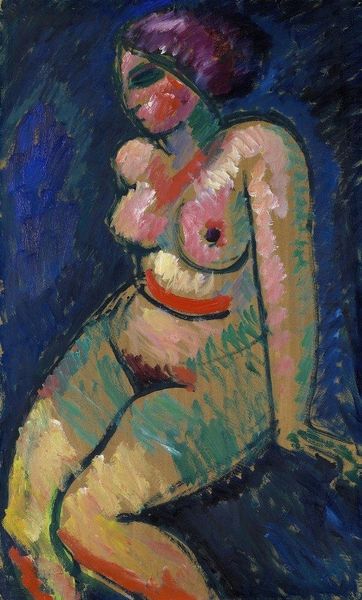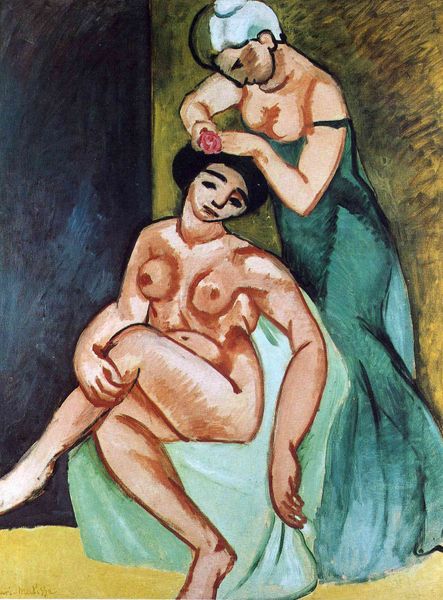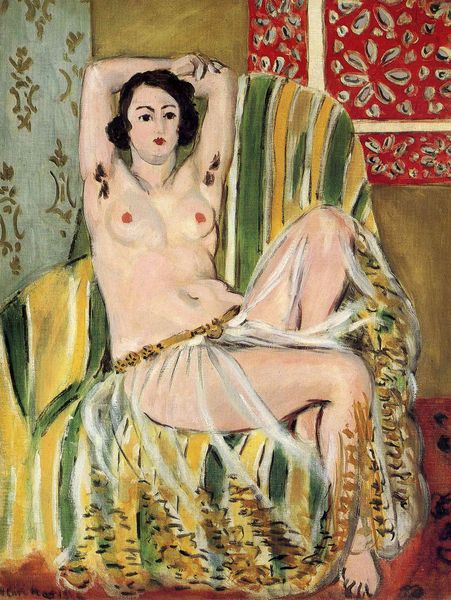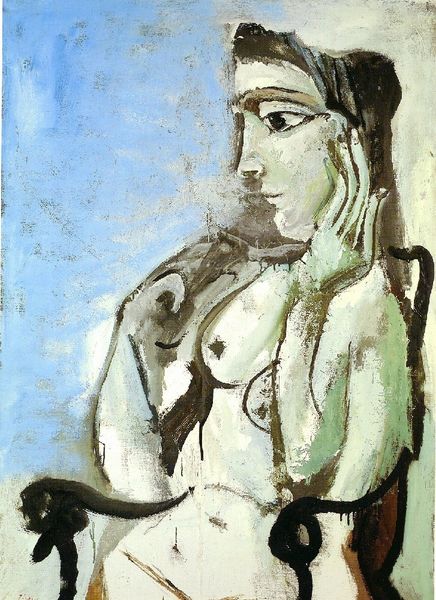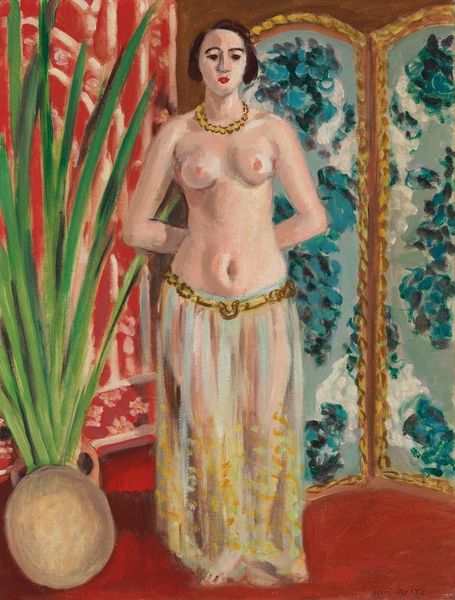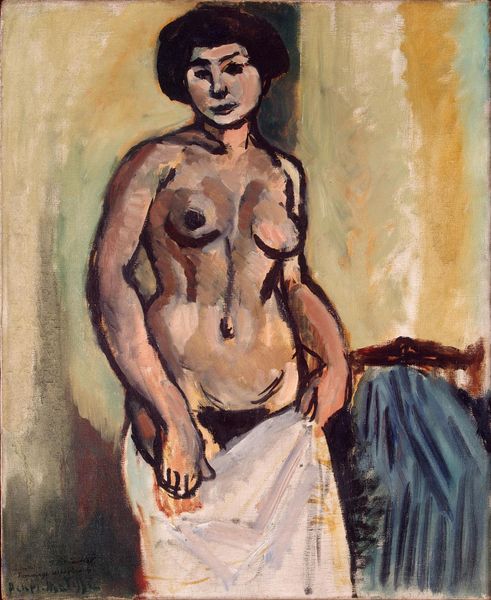
Copyright: Public domain US
Curator: Editor: This is Henri Matisse's "Odalisque, Half-Length (The Tatoo)," created in 1923 using oil paint. I'm immediately drawn to the contrast between the muted, almost melancholic color palette and the subject's rather direct gaze. It feels complex. What do you see in this piece? Curator: I see a rich tapestry of colonial influence and orientalism, wouldn't you agree? Matisse was fascinated by North Africa, and these "Odalisques" became a recurring theme. Consider the Western gaze inherent in these depictions of the Eastern "other," and how this piece is fraught with power dynamics. What do you notice about the sitter's posture and adornments in relation to these ideas? Editor: It's interesting to think about her presentation. I see what you mean – she’s partially nude, but also adorned with jewelry and a headscarf. Does that make her exoticised? It's like she is on display but still retaining something of her culture. Curator: Precisely! Her perceived “exoticism” is constructed, and we need to ask ourselves *who* is doing the constructing and *why*. Matisse draws inspiration from orientalist tropes to both participate and seemingly critique in some ways, creating an ambiguous interplay of power, desire, and artistic expression. Do you think her gaze challenges this dynamic in any way? Editor: It does seem a bit challenging. She doesn’t seem submissive, necessarily. Perhaps the "tattoo", placed front and center, is some reclamation of her identity? Curator: Perhaps it serves as a powerful marker of self-assertion within a visual narrative that threatens to consume her. Considering all we discussed, how does that reframe the "melancholic" mood you initially perceived? Editor: It's not just melancholy; it's maybe a defiance against that kind of passive reading. It shows so much more complexity when thinking about how art is embedded in historical power dynamics! Curator: Precisely. It highlights the importance of questioning the narratives that works of art put forward, while contextualizing them. A truly illuminating moment!
Comments
No comments
Be the first to comment and join the conversation on the ultimate creative platform.
